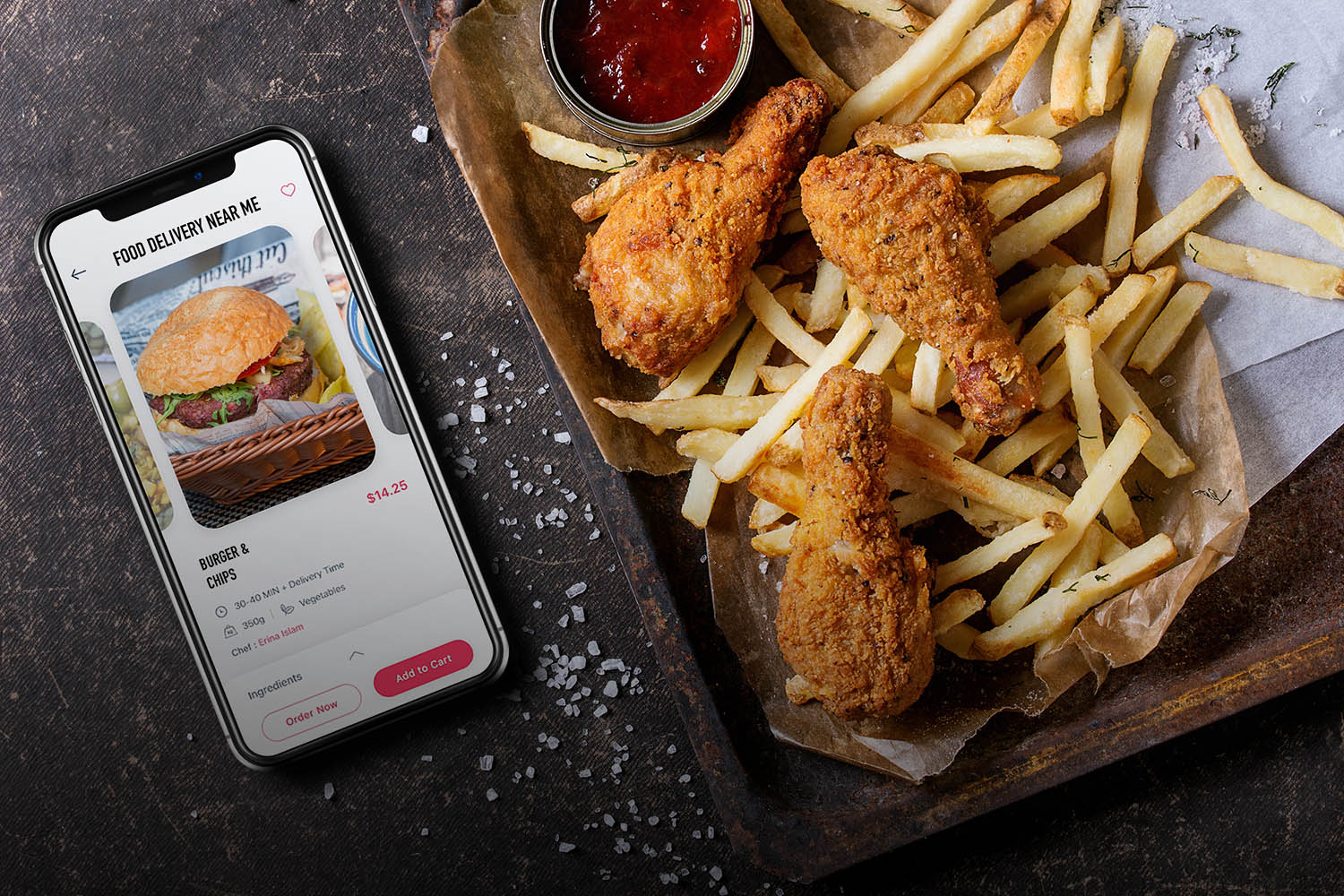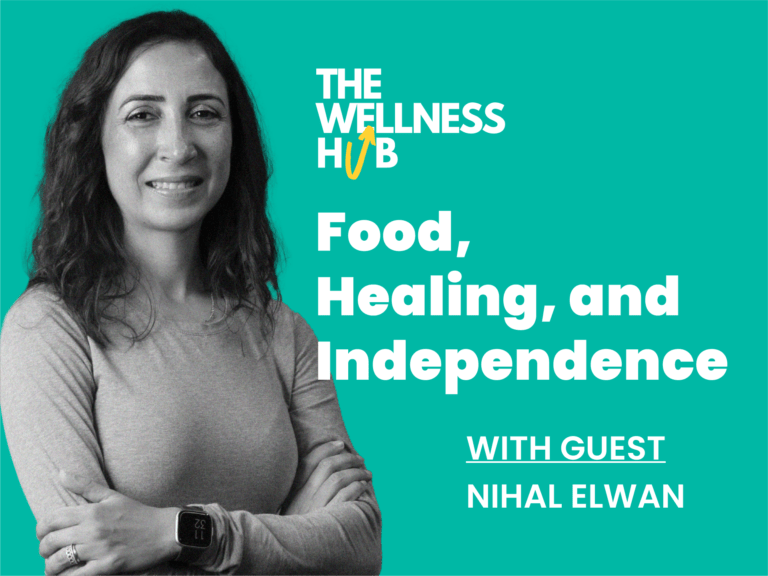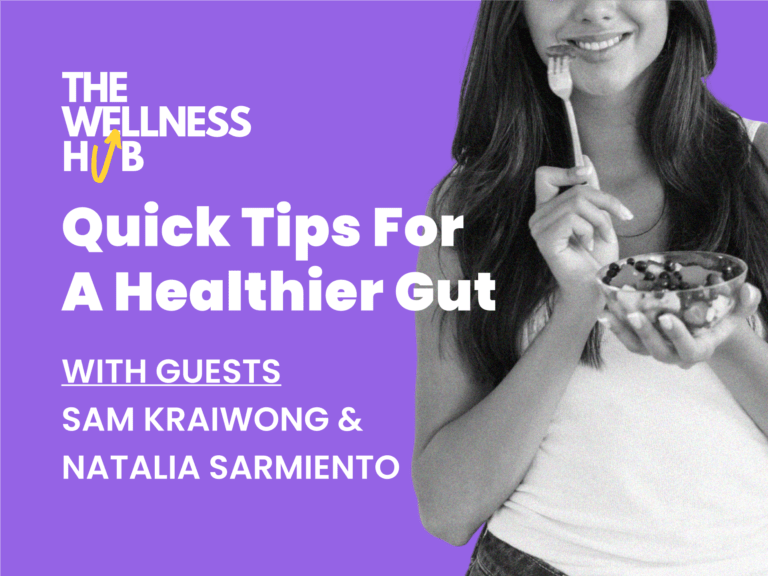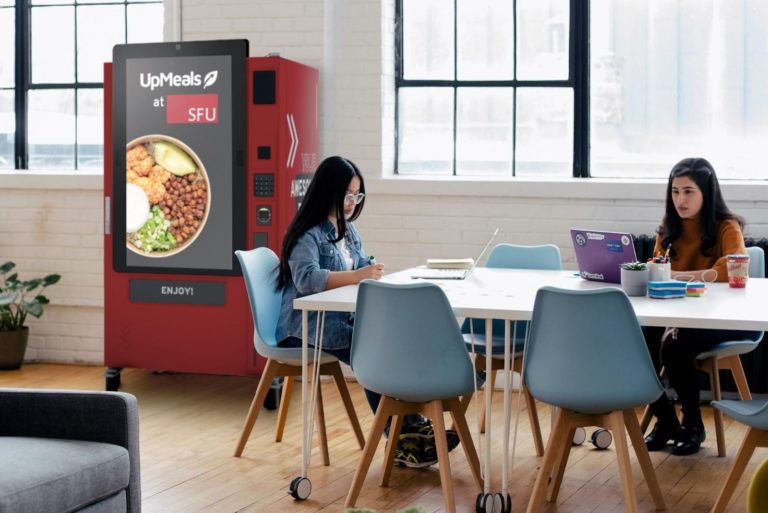Technology has played a huge role when it comes to food access. From meal delivery apps to online grocery orders, our ability to quickly and conveniently access food has skyrocketed. Apps like UberEats and DoorDash are now common household names for many around the globe.
As of 2018, meal delivery orders through apps like UberEats, GrubHub, or Doordash accounted for 50% of all delivery orders, representing an industry worth over 26 billion dollars.1 In 2020, amidst the start of the COVID-19 pandemic, these numbers grew rapidly as many restaurants had to close their doors to dine-in options.
The convenience and support these apps offer have made it safe and easy for many to access food whenever they need. However, there is growing concern about how this ease of access is affecting our health. Let’s look into some of the issues that have come with the growing relationship between food access and technology.
Do Meal Delivery Apps Support Healthy Eating?
There is no arguing with the convenience and enjoyment of a restaurant-prepared meal delivered straight to your door. What’s less appealing is how easy access to multiple restaurant meals on food apps can promote unhealthy eating. Many of these meals prepared away from home tend to have higher caloric values, added sugars, and excess saturated fats.2
According to a study led by the University of Sydney, the largest category of food that meal delivery platforms offer are fast foods packed with refined sugars and processed items. Pizzas, burgers, sandwiches, wraps, and other highly-process items account for 42% of menu options.3
The great availability of fast food and less healthy options on these platforms is made worse by in-app advertisements. A comparison study observing meal delivery platforms in Chicago, Melbourne, and Amsterdam observed that around 42% of the in-app advertisements showed consumers unhealthy options such as pizzas, burger combos, and sandwiches. In contrast to only 13% that represented healthy options like salads and other balanced meals.4
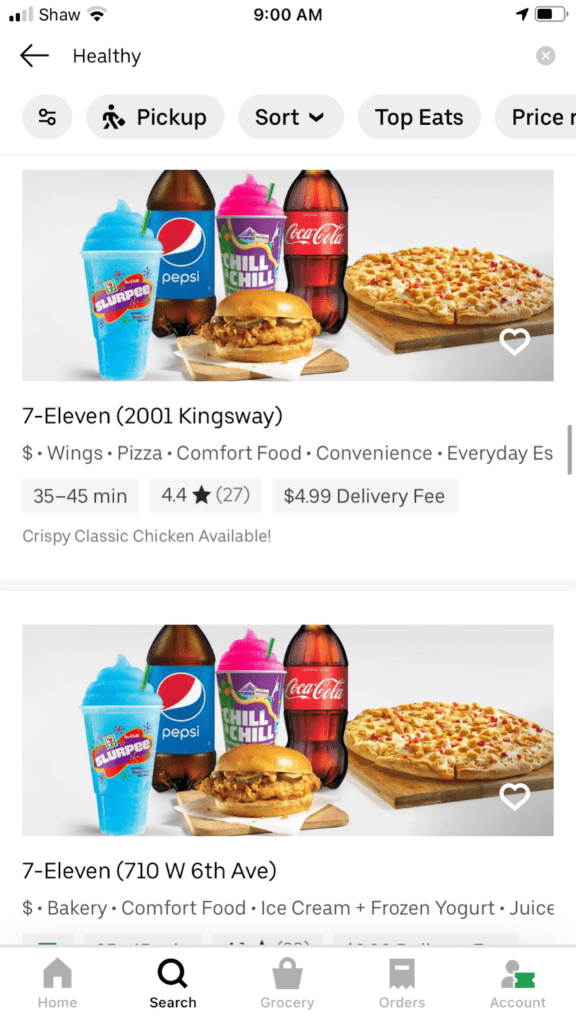
Many of these apps have tried to circle around this issue by creating “healthy” categories of food, and if you are browsing through a delivery app like UberEats you can now find a tab of “healthy” options next to other search categories such as cuisine styles and popular eats. While these labels help sort out options for someone who is actively trying to pick a healthier choice, there is a major pitfall to this system:
The tags and labels that filter these categories are self-assigned by the businesses, which calls into question the objectivity and accuracy of these claims. This has made fast-food chains like Chipotle (which one could argue is indeed on the healthier side of fast food chains), Subway, and even 7-Eleven come up under the category of “healthy” food options.
This mislabeling of food can create confusion for consumers who are not nutritionally conscious. It can also generate more traffic to fast food joints from customers that were trying to make a healthier choice.
How can technology support healthier meal delivery choices?
There’s no denying that delivery apps are a valuable resource. They’ve helped simplify lives, boost business performance, and create new job opportunities. The benefits are undeniable (especially now while we face the difficulties of COVID-19), but it’s clear that there are pitfalls in terms of their ability to promote health. So what are some things these companies can do to make their services more health-friendly?
Many of the shifts that meal delivery apps could make to promote healthy choices are quite simple at the core. Researchers in Australia have explored opportunities to improve public health effects of online food delivery and suggested some simple changes. These include, editing menu layouts to highlight healthy options, promotional tagging of balanced, nutritious meals, and the recommendation of healthier alternatives to previously ordered meals.2 Not to mention other additives like preservatives, artificial colours and flavours, and taste enhancers like MSG.
Access to convenient and safe food should not be at the price of healthy options. As we face more diet-born health issues like obesity and multiple chronic diseases, our efforts to support public health need to double. The companies behind these apps have great potential to boost health initiatives that can reach millions of people instantly.
Start healthy meal plan with UpMeals!
References
- Stephens J, Miller H and Militello L (2020) Food Delivery Apps and the Negative Health Impacts for Americans. Front. Nutr. 7:14. doi: 10.3389/fnut.2020.00014
- Bates, S., Reeve, B., & Trevena, H. (2020). A narrative review of online food delivery in Australia: Challenges and opportunities for public health nutrition policy. Public Health Nutrition, 1-11. doi:10.1017/S1368980020000701
- Wang, C., Korai, A., Jia, S. S., Allman-Farinelli, M., Chan, V., Roy, R., … Partridge, S. R. (2021). Hunger for Home Delivery: Cross-Sectional Analysis of the Nutritional Quality of Complete Menus on an Online Food Delivery Platform in Australia. Nutrients, 13(3), 905. doi:10.3390/nu13030905
- Poelman, M.P., Thornton, L., Zenk, S. (2020) Meal delivery and public health nutrition: a comparison study in three international cities. European Journal of Public Health, Volume 30, Issue Supplement_5, September 2020. https://doi.org/10.1093/eurpub/ckaa165.715

